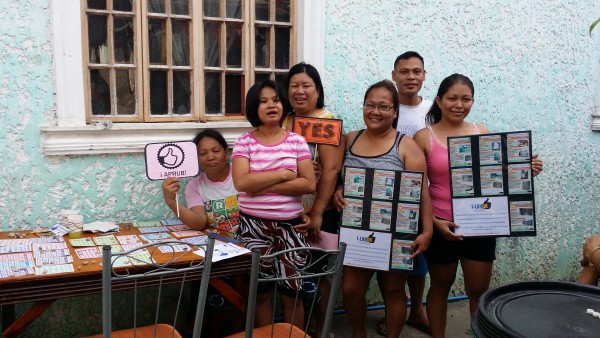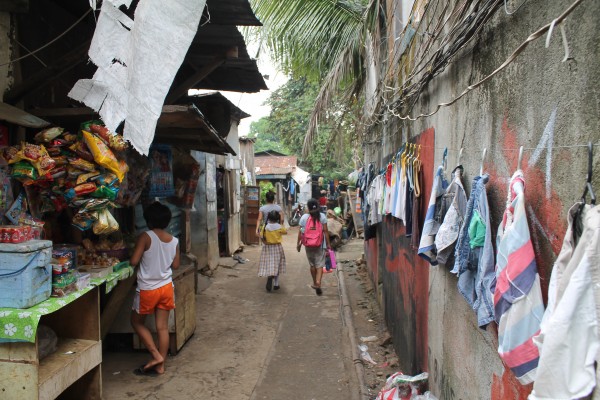The Philippines has known many nicknames. It was once called the ‘text-messaging capital of the world’. When smartphones and social media made their way into the Filipinos’ life, it rightfully won the title of the ‘selfie capital of the world’. Today, new titles keep emerging: ‘the digital lifestyle capital in the making’, ‘the perfect digital storm’…
With more than 44 million Internet users - 90% of whom are active on social media - who wouldn’t think that reaching out to citizens online would have great impact?
This uniquely connected country has inspired many transparency and accountability initiatives to build digital tools and use tech to achieve greater inclusion and better governance. But are tech-focussed projects actually bringing citizens and government together, or are we in danger of mistaking connectivity for real connection?
Recently, I visited a Making All Voices Count partner in Manila and learned about the ‘behind the scenes’ story of Check My Barangay, a project that helps community members have a say in what projects their local government is funding.
Designed by the Affiliated Network for Social Accountability–EAP Foundation (ANSA–EAP), the project piloted a multi-platform approach, using a website, a mobile app and community meetings to give everyone equal access to the planning decisions of their barangay - the smallest political unit in the Philippines.
The team did everything right, but…
They started by developing the tech – a website where all data could be aggregated, a mobile application which people could use to propose new projects they thought the barangay government should deliver and social media accounts where they could monitor how well the projects were going. The team also invested a great deal of effort in training people to use the tech: they trained community groups and local government workers on how to use the website and the app; they held meetings for people who weren’t confident in accessing the online platforms – in short, they followed all advice about combining online and offline approaches.
But the project didn’t take off. Despite the training, the mobile app and website weren’t being used – and the ANSA-EAP team were left asking why, in a country that is so well known for being ‘connected’, was this tech not providing new opportunities for people to connect with and really influence their local government?.
Facebook was more active than the mobile application and the website combined. So we were left wondering ‘why doesn’t it work?'- Jalton Taguibao, Project Manager, ANSA-EAP
Does a barangay really need tech?
Imagine a barangay as a large neighbourhood or a small village, where normally 50 to 100 families reside. Do you really need a new medium to spark a conversation?
One of the key selling points of using technology for development is about reaching more people, more effectively for less money – but at this local barangay level, it seemed as though the community weren’t seeing any added value of these new online systems, especially when they could already speak directly to officials through community meetings.
A tech-based solution might be a great option in cities, where there are far more people and far less opportunities for face to face interactions. But, for barangays, where residents often know each other and the barangay officials, it was the offline conversations, and the personal nature of community meetings that drew people’s interest.
So what did work? Combining 'old school' interaction with new media
Sometimes project implementation looks and feels like a roller coaster ride – and I am sure many project managers around the globe have had this feeling at least once in their working life. ANSA-EAP tried different platforms, found what worked and capitalised on that.
They were clear that ‘innovation’ for them was not about the tech, it was about doing things differently. There was plenty of creativity and an old-school marketing strategy in place. Just visualise this… A traditional Filipino jeepney, strapped with speakers and posters of proposed future projects, going around the neighbourhood, while volunteers and barangay officials went door to door to ask people to vote for the project that they would like to see implemented.
The project team also embraced the idea of putting people first and platforms second. They were committed to community meetings, bringing together ordinary people with public officials to establish mutual trust and shared goals, and then using social media to strengthen the relationships they were building. Without this, none of the technology could work - who trusts a Facebook page if they don’t know the people behind it?

The Check My Barangay team went door to door to ask citizens to vote for their preferred projects. Photo: ANSA-EAP
We’ve seen technology change the way we work in disasters, in urban planning, in mapping conflict and crises. It has huge potential and ability to affect change at scale. But, my experience with ANSA at the barangay level left me asking how can we balance the need to build relationships and trust, reaching people one at a time, with the potential of technology that can reach millions?
Watch a video produced by ANSA-EAP on Check My Barangay here.
